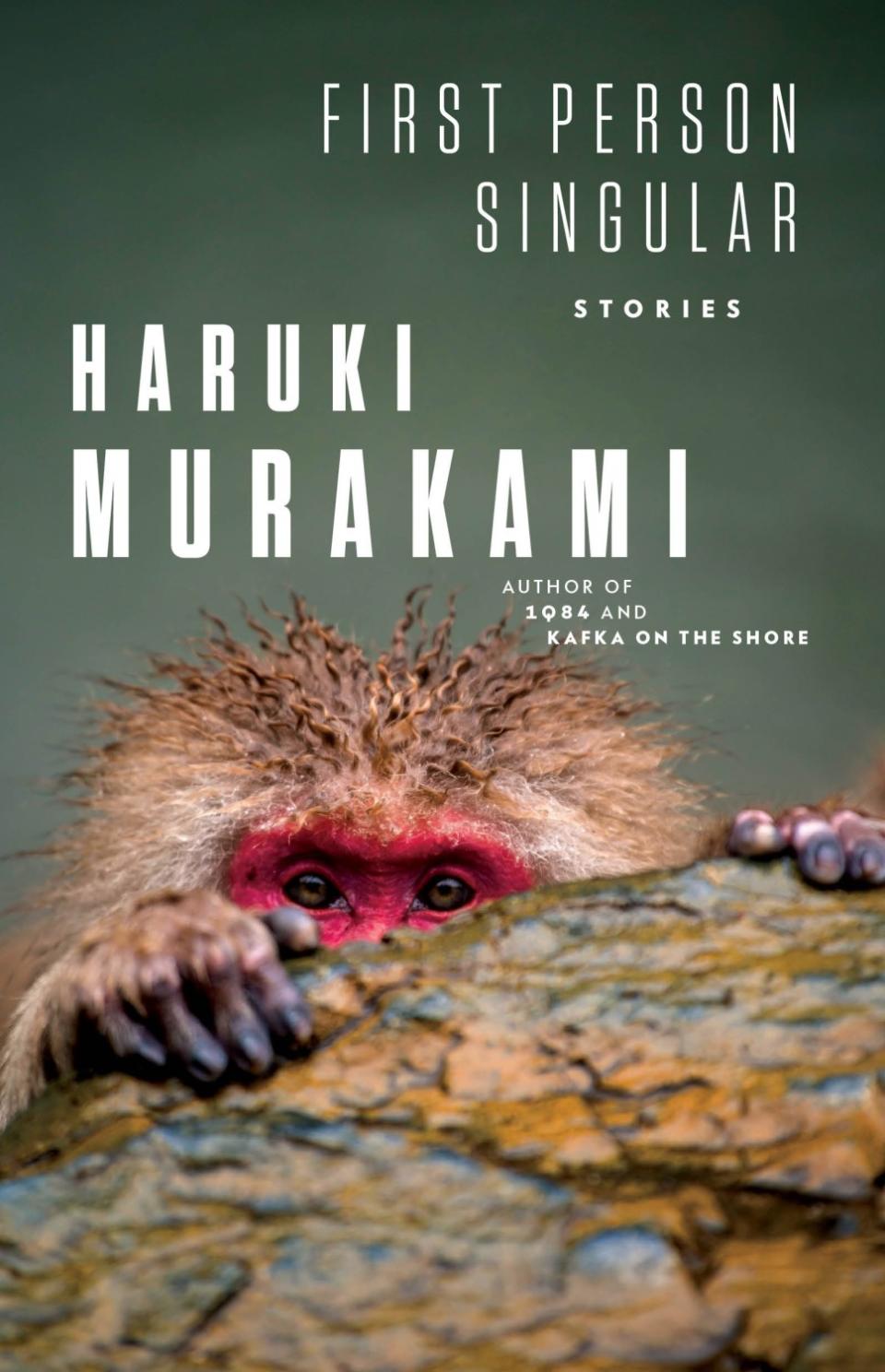Review: How Haruki Murakami fell down a literary well

Haruki Murakami has fallen down a well.
His middle-aged, perfectly ordinary, pasta-cooking protagonists often end up at the bottoms of wells, trapped for days like the protagonist of “Killing Commendatore,” or drawn down the ladder for some thinking time like Toru Okada in “The Wind-Up Bird Chronicle.” Wells serve as portals in Murakami’s work, tunnels into memory and forgetting. Now Murakami has found himself stuck in the dank dark, so immersed in the total recall of the work that came before that he cannot see his way into the future.
His new short-story collection, “First Person Singular,” is predicated on a “Two Truths and a Lie”-type premise. Some of the stories allegedly are taken directly from the mega-novelist’s real life. Others are standard Murakami fiction: a polite and charming talking monkey scrubs backs in a ryokan bath; a college student in the 1960s embarks on his first love affair; a jazz lover reminisces about a fantasy Charlie Parker album. “Memoir or fiction?” the back cover asks. “The reader decides.”
The real question is: Does the reader care? Each story is like the greenery filler in a grocery store bouquet: stiff and charmless, background fodder, indistinct organic matter. They’re like copies of copies of copies of Murakami’s older work; all the specificity and vivacity is blurred out. The women are rubbed down into featureless nubs, the men deflated caricatures — popped balloons. The only appeal left to make to the reader is the brand name on the cover.
Murakami has never been the recluse of popular repute, but “First Person Singular,” his fifth story collection and 22nd book, arrives as he seems more willing than ever to commodify his bigger-than-cult status. In November he’ll publish a glossy book about his apparently impressive T-shirt collection. Like Billie Eilish and the estate of Jean-Michel Basquiat before him, he just released a line of T-shirts with Japanese mega-retailer Uniqlo (it promptly sold out). His author website, once typical fare, is now a machine designed to open Murakami’s personal life up to his readers: click here for an annotated photo of his writing desk, there for a collection of snaps from Tokyo “to give American readers a sense of Japan.” If the Murakami of old revolutionized Japanese stories by importing American culture, the Haruki of today has made himself into a key export.
Sadly, his reach now exceeds his imaginative grasp. Murakami has been overplanting in his fields for years, and they have grown fallow. Dusty, dull, inhospitable to life.
I say this as a Murakami completist, a devoted fan of his misanthropic magic. A math professor, of all people, gave me my first Murakami, an uncorrected galley proof of “The Elephant Vanishes” — a gateway drug to his brand of surrealism, which refuses to admit it is surreal. From there I downed “The Wind-Up Bird Chronicle” and “Norwegian Wood” — the two tentpoles of his fiction — and worked my way in and out of his oeuvre. “Kafka on the Shore'' and “Sputnik Sweetheart” liberated my notions of character identity and presaged the literature of disassociation represented more recently by novelists like Catherine Lacey and Katie Kitamura.

But after 2005’s dreamy Oedipal redux “Kafka on the Shore,” Murakami put out insultingly onerous chronicles — “1Q84,” “Colorless Tsukuru Tazaki and His Years of Pilgrimage” and “Killing Commendatore” — attempts to recapture the thrilling, mazelike quality of “The Wind-Up Bird Chronicle.” Each performed the patented Murakami shtick: a lovelorn man on the cusp of 40, often oddly infatuated with a startlingly young woman, embarks on a quest to make sense of a set of indiscernible, probably meaningless “clues” to solve a psycho-emotional mystery only he perceives. These puzzles were innovative when Murakami first published them three decades ago, but an innovation spun a dozen different ways is just repetition.
The eight stories in “First Person Singular” share a deadening lack of curiosity. In the first story, “Cream,” an unnamed young man receives an invitation to a piano recital; when he arrives the concert space is locked and deserted. On the walk home he meets a man muttering about “a circle with many centers,” who then vanishes. The point? “What took place that day was incomprehensible, inexplicable, and at eighteen it left me bewildered and mystified.” OK. The title story follows a maybe-Murakami into a bar where a “friend of a friend” berates him for a supposedly “horrible, awful thing” he did. He leaves, and “a wave of bewilderment and confusion swept over me.” I’m not leaving out the details; this is really all there is.
That’s the tenor of the rest of the collection: men shrugging and muttering, “That was weird.” (Only “Confessions of a Shinagawa Monkey” lives up to its promise.) Unlike the best of Murakami, in which strange coincidences subsume the characters’ lives, pulling them into vast underground conspiracies that reorient their (and our) relationship with the “normal” world, “First Person Singular” butts up against oddities and then walks away, slightly bewildered.
But sheer snooziness isn’t the collection’s worst offense. Murakami’s treatment of women is abhorrent. He disregards women as interchangeable and unremarkable for anything other than their looks: of all the women in these eight stories, only one has a name. Murakami’s last collection, ‘Men Without Women,” at least broadcasts its intent. “First Person Singular” doesn’t even provide itself cover.
In “On a Stone Pillow,” the protagonist explains his brief relationship with a poet; he “can’t even remember her name, or her face,” but does remember “her shapely round breasts, the small hard nipples" and other anatomical details the reader will find less interesting than the narrator does. “With the Beatles” features another now-nameless woman who “looked gorgeous. She wasn’t tall, but she had long black hair, slim legs, and a lovely fragrance.” She kills herself, offscreen. “Carnaval” rolls out yet another, this time referred to as F*; “Of all the women I’ve known until now, she was the ugliest.” He goes on about her looks for several pages, only noting about her personality that she was “friendly and straightforward.” She too meets a cruel end.
Namelessness, especially in a collection that plays with notions of authorial identity, isn’t such a grievous offense on its own. But the collection on the whole is dismissive of women as creatures of intellect and agency, and so bent on spotlighting its own ignorance that it feels less like a stylistic move than a simple refusal to see women in three dimensions. After writing a long string of hypersexualized teen girls, Murakami ought to hope we read all these as fiction and pretend that the “is-it-memoir” question is merely a literary stunt.
Fortunately for the nation Murakami’s oeuvre has too long defined for American readers, many female Japanese authors — Yoko Tawada, Sayaka Murata, Yoko Ogawa — are rising up to take his place, with their more fully realized reflections on how much more bizarre fiction must be if it is to understand real life. In 2017 one of those women, Mieko Kawakami, the author of “Breasts and Eggs” and a named heir by Murakami himself, pressed him about “the large number of female characters who exist solely to fulfil a sexual function” in his fiction. He denied the charge, but “First Person Singular” reaffirms it. And as Kawakami replied, “Women are no longer content to shut up.”
This story originally appeared in Los Angeles Times.


